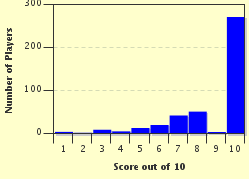Quiz Answer Key and Fun Facts
1. San Francisco was hit by an earthquake on 18 April 1960.
2. The Titanic sank on 15 December 1912.
3. The armistice ending fighting on the Western Front in World War I was signed on 5 November 1918.
4. The airship Hindenburg exploded on 6 May 1837.
5. Hitler invaded Poland on 15 September 1939.
6. The first nuclear bomb was dropped on Hiroshima on 6 August 1955.
7. Edmund Hillary and Tenzing Norgay reached the summit of Mt Everest on 29 December 1953.
8. US President Kennedy was assassinated on 1 November 1963.
9. Chernobyl nuclear accident occurred on 26 April 1886.
10. A World Series baseball game was cancelled due to an earthquake on May 17, 1989.
Source: Author
looney_tunes
This quiz was reviewed by FunTrivia editor
bloomsby before going online.
Any errors found in FunTrivia content are routinely corrected through our feedback system.


